The making of the PRS SE Silver Sky: how Paul Reed Smith and John Mayer created the best SE model yet
The SE Silver Sky was no overnight operation. PRS’s Jack Higginbotham explains all as we discuss the highly anticipated model’s lengthy development
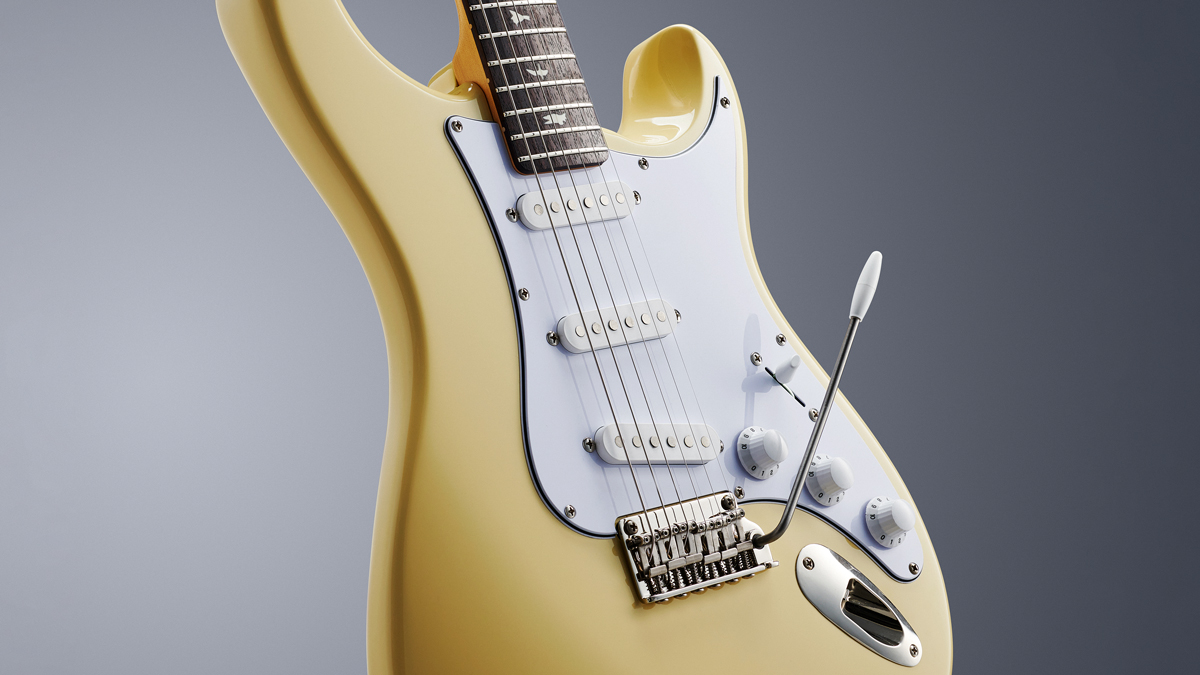
The Silver Sky is a phenomenon. From its launch four years ago – the guitar that ‘broke’ the internet – John Mayer’s model has been in constant demand, something that surprised PRS’s chief operating officer, Jack Higginbotham.
“From my perspective, if you go back to the beginning of the concept and before we had prototypes and things, I was looking at what the pricing was going to be and the actual demand has been, like, 20-fold more than what I was originally thinking,” he tells us.
“Even as the guitar started developing, and with John Mayer’s and Paul Reed Smith’s excitement, and then we showed it to some of our trusted partners, I’d say the interest in the guitar is still double what I thought it would be. It’s got legs I didn’t necessarily think it would have. It keeps on going and the orders still keep on coming.”
Has the Silver Sky eclipsed the classic Custom 24 in terms of demand and sales?
“No, I don’t think so. I would have to double-check the figures, but I believe the 594 is still outpacing the Silver Sky, and the Custom is outpacing the 594. But I think those are the three.”
When did you start planning the SE version of the Silver Sky?
“Quite literally the SE version was in the first conversation that I had with John Mayer – before there was a Silver Sky. There was talk back then of there being an SE version from that first conversation. I vividly remember that conversation with Paul and John, and John was asking about the SE series and how the proposed guitar could become a wide range of products.
Get The Pick Newsletter
All the latest guitar news, interviews, lessons, reviews, deals and more, direct to your inbox!
“Logistically speaking, we started work in earnest on the SE version, rather than it just being a concept, about two years ago.”
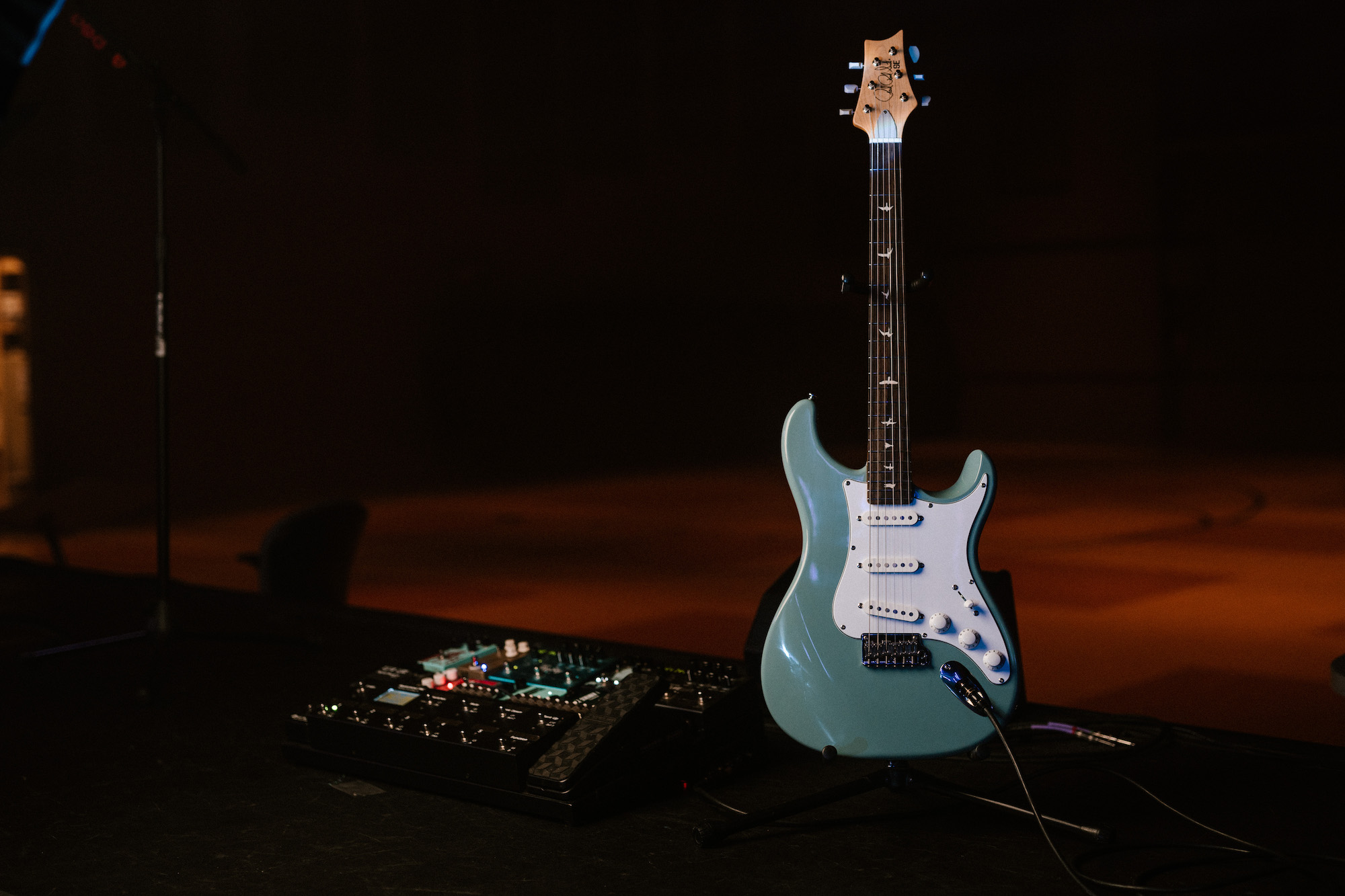
The SE Silver Sky is being made by your partners in Indonesia, Cor-Tek, but we understand you’re moving into your own facility over there?
“Yes, we started out in a combination factory, called the Premium factory, which is where a bunch of brands including Cort’s own-brand instruments are made. We moved into our own facility probably two years ago – we did a factory tour that’s on our YouTube channel. But it became apparent even from then that it wasn’t going to be big enough in terms of output.
The radius is different from the US model, it’s 8.5 inches, it’s not a standard radius for a fretboard, but it’s one that we felt would accommodate both John Mayer’s sensibilities and the broader public’s sensibilities without compromising it
“We were looking at taking over more buildings, but Cor-Tek’s Jun Park said let’s not do that, let’s go ahead and build one building with the ability to get flow [of production] better and basically double the size at the same time. That building is now set to open: we’ll be moving the factory in January 2022 and firing up production in early February.
“As far as the future goes, unless the economy does something crazy, I see no reason why we can’t double what [output of instruments] we currently have – which is triple what we used to have. I believe that with the ideas we have going forward… I have a five-year plan that I think could possibly take us to a $75 million SE business. I think that is real.”

Now, you don’t need to be a market analyst to surmise that a more affordable version of a high-demand item is only going to increase demand, but we can’t side-step the elephant in the room: the Silver Sky is the closest PRS has ever got to making, well, a copy of another design.
PRS’s defence is that the Silver Sky re-examines every facet of that design and improves the art and craft and the sound, adding subtle PRS-isms such as those small bird inlays and the rather more pronounced reversed PRS three-a-side headstock.

Surely, then, we put to Jack, making an offshore version at a third of the price will mean that those subtleties are lost and the SE Silver Sky will just become another generic Fender copy?
“That’s a great question and a valid concern,” he offers. “But I don’t have that concern because, well, I have one here – we’ve both got one! – so I can go through it with you. Everything about this is not generic to me. The tuning pegs, they’re a special-order item, made to our specs, just like the USA pegs.
“The design of these pegs has the same call-outs as the USA pegs: all the things that we think make a peg sound good, these have [them], too. The nut is a composite that we spec’d out, proprietary to this guitar. It has its own mould.
“It’s moulded incredibly accurately as far as the string-break goes so that sound transfer and all the geeky stuff we’ve done in the US, we’ve really applied it to this SE probably more than any other SE because it was built from scratch – there’s nothing carrying over [from a previous or existing SE model]. So the nut is its own thing.
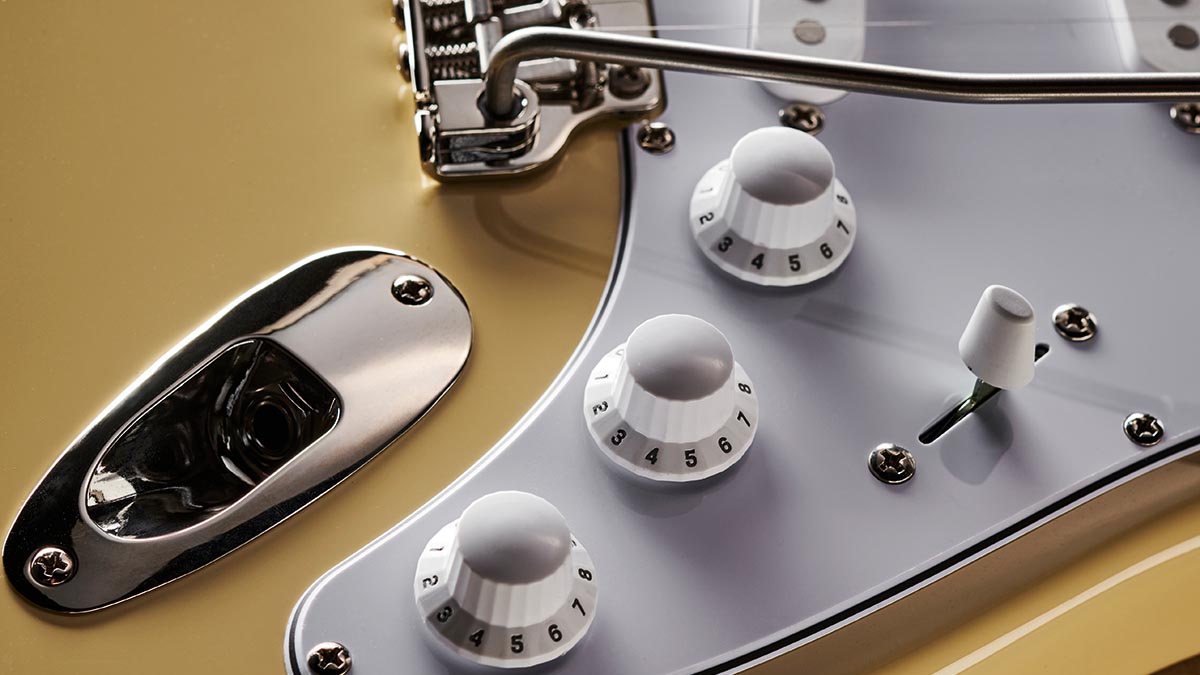
“The fretwire is a stock item, a company from Korea makes the fretwire, but it’s really close to our US Silver Sky specs. The neck shape – obviously – is not a generic neck shape. The radius is different from the US model, it’s 8.5 inches, it’s not a standard radius for a fretboard, but it’s one that we felt would accommodate both John Mayer’s sensibilities and the broader public’s sensibilities without compromising it.
“The body is probably the most generic – nothing crazy there. It’s made from poplar instead of the alder we use in the US. The jack plate is literally our US jack plate.
Paul rarely agrees to doing a double blind test, but we did one with that and the poplar body was the first alternate choice by a long shot. It just sounded better: more consistent
“The bridge is obviously our own bridge, too; it’s a two-post design and it’s very similar to the Mark Lettieri Fiore guitar. The backstory is that this bridge was pretty deep in development when Mark’s guitar came to be and we actually took this bridge design and modified it, and that’s what Mark got on his guitar.
“So even though this one came out second, it was the impetus for the other one. It’s not exactly the same; it’s SE’d if you will. It’s metric as opposed to SAE, some of the materials are slightly different, but it was the starting point for the Fiore’s bridge.”
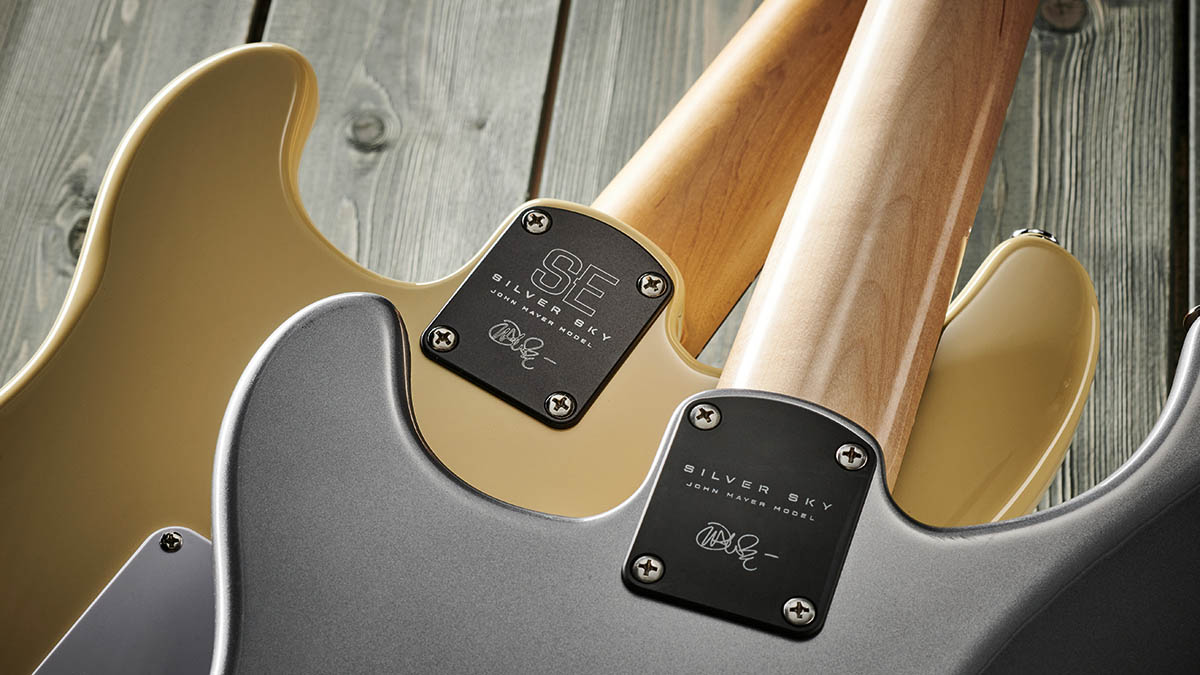
Why switch the body wood to poplar from alder? It’s perceived as a cheaper alternative, isn’t it?
“Yes, I’d agree with that, but we did it because we expected very large numbers and high-demand for the guitar, and we didn’t want to be limited by anything – we didn’t want to have capacity issues. That was the first thing, so we started looking for material that was more readily available but still of higher quality so we wouldn’t be encumbered by it.
“Then we got in various different samples, alternatives, and Paul rarely agrees to doing a double blind test, but we did one with that and the poplar body was the first alternate choice by a long shot. It just sounded better: more consistent and with more tonal characteristics with these pickups – they complemented each other really well.”
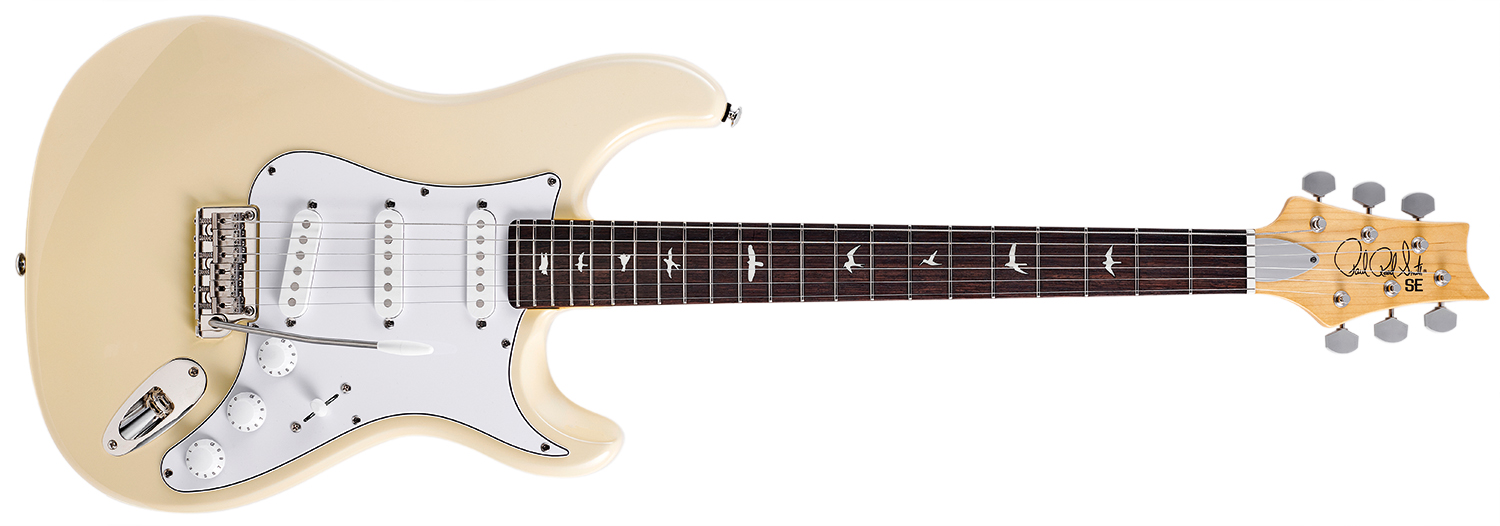
Speaking of which, the Silver Sky’s 635JM pickups took quite a bit of work to get right. Where did you start with the ‘S’ versions for the SE?
“That’s probably a story in itself! Basically, we said we know what we want it to sound like and we know what their limitations are on materials. As we’ve previously discussed, there is a company there [in Indonesia], PSE, that makes the pickups for Cor-Tek.
“Young Park is the older gentleman who owns Cort; Jun Park is his son and his brother, Peter, owns PSE [Pickups], which is basically the pickup company that’s in the compound in Indonesia. It’s massive and they make so many pickups, so fast.
“There’s a guy there, Nemo. He’s a really great guy and I think we capture his imagination a little bit. He looks at it as, ‘Here’s PRS – these guys really like what they’re doing, it’s a challenge and I’m going to enjoy working through this stuff with them.’ So we asked him to send us a spool of wire that we thought was the closest he had to what we use to wind the Silver Sky pickups in the US.
“We started to mess around with the mass of the magnetic polepieces and just took things that he could get and started building pickups from scratch here in the US and seeing how close we could get [to the Silver Sky’s pickups].
“Once we got it to a place – and we have kinda a weird methodology of driving some extra metal through the fibre board – where we were happy with the sound, we sent it back to Nemo and he started reverse engineering the pickup. That took a while, about a year, and then once we got that really close we started messing around with resistors on the volume pot, really getting it down.
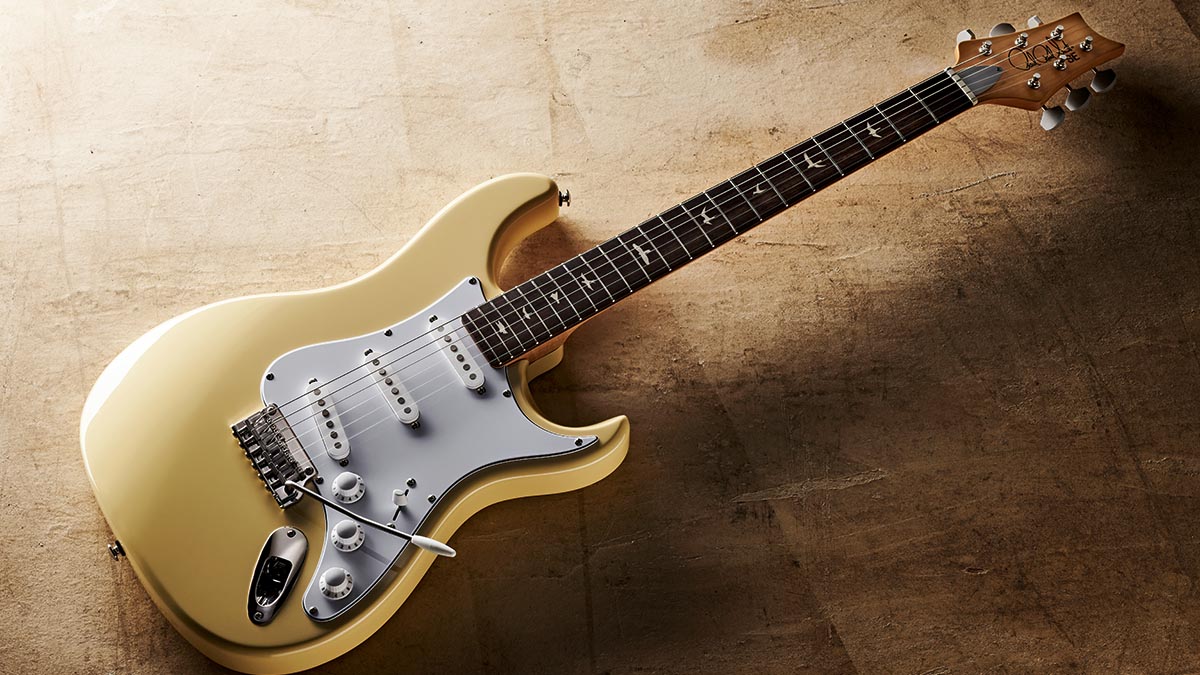
“When it’s all said and done, it’s different from the US Silver Sky’s, but some people like it a little more because it’s got a little bite to it, whereas the US Silver Sky pickups are very round and very mellow. I think they’re beautiful and they sound wonderful, but this guitar cuts a little more, like what you’d expect a single coil guitar to do. In certain people’s heads they really like it.
“I just bought an old Ampeg VT-40 from Paul with 4x10s in it – it’s a fantastic amplifier and I’ve got a US Silver Sky at my house and one of the SEs. They both sound wonderful, but this, the SE, is what I think more of as a single-coil sound that I want to get. We’re really pleased in the way the sum of all the parts are working together: they’re playing together nicely from the vibrato, the body material, the pickups, the way the nut works, the way the pegs work.”
The SE Silver Sky has a slightly unusual setup in terms of that vibrato, right?
“I guess we’re going slightly off reservation in the way we set these guitars up. We’re going about 2/32-inch up on the front and then decking the back of the bridge. I’ve tried it all sorts of ways: fully decking it, coming up one 32nd, two 32nds and dropping the saddles down – this is what we think is the sweet spot to how to get the guitar sounding the best.”
Like the USA guitar, we have a choice of four colours. We’d guess John Mayer might have had a say in those…
“Oh yes, John was very involved in this process as you can imagine. He had Pantone colours in his head that didn’t work that well with the [polyurethane] finish that we’re using in Indonesia, so we did have to compromise there a little. The Stone Blue finish is one that he actually suggested early on and then he decided that he didn’t like it.
“But we’d already shot some samples and it’s the colour I really love, so I had to argue with John a little bit to keep that as he wanted to kill it. Now it’s his favourite colour, so that’s cool! It’s actually a 1955 Ford pickup truck colour.”
Dare we ask if you’re going to offer the SE Silver Sky with a maple fingerboard?
“Here’s what I think will happen. We’re already swamped with demand that we can’t fulfil. We’re going to launch this thing and a whole other wave is going to hit us that we’re going to struggle with for a year or two to fulfil. Then we’ve got some more ideas cooking that’ll do it all over again. So, my best guess is that a maple version is at least three or four years away.”

Dave Burrluck is one of the world’s most experienced guitar journalists, who started writing back in the '80s for International Musician and Recording World, co-founded The Guitar Magazine and has been the Gear Reviews Editor of Guitarist magazine for the past two decades. Along the way, Dave has been the sole author of The PRS Guitar Book and The Player's Guide to Guitar Maintenance as well as contributing to numerous other books on the electric guitar. Dave is an active gigging and recording musician and still finds time to make, repair and mod guitars, not least for Guitarist’s The Mod Squad.
“It holds its own purely as a playable guitar. It’s really cool for the traveling musician – you can bring it on a flight and it fits beneath the seat”: Why Steve Stevens put his name to a foldable guitar
“Finely tuned instruments with effortless playability and one of the best vibratos there is”: PRS Standard 24 Satin and S2 Standard 24 Satin review










